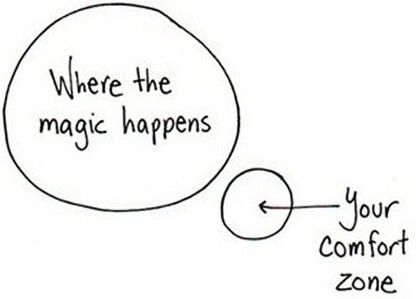At the essence of building a respectful workplace culture lies a profound shift from lip service to genuine practice. It transcends surface-level policies to become a living, breathing ethos within an organization. By delving into tangible examples, drawing from academic insights, and providing actionable tips, within this article we will illuminate the path to creating a workplace where respect thrives organically.
What a Respectful Workplace Actually Looks Like in Practice
Rather than merely avoiding conflicts, a truly respectful workplace is one where interactions are imbued with empathy, understanding, and authentic engagement. For instance, imagine a team where colleagues actively listen without interruption, freely acknowledge and credit the contributions of others, and engage in constructive dialogue that challenges ideas while honoring individuals’ dignity.
 Image Source: Faster Capital
Image Source: Faster Capital
The Invisible Forces That Shape (and Undermine) Respect
Exploring the interplay of power dynamics, unconscious bias, cultural norms, and the deafening impact of silence on respect can reveal how deeply ingrained behaviors influence workplace culture. By acknowledging and addressing these subtle yet potent factors, leaders can pave the way for a more inclusive and respectful environment.
Building a Culture of Respect from the Inside Out
Set the Tone at the Top
Leaders serve as the compass guiding organizational culture. By embodying respect in their feedback, decision-making, and conflict resolution processes, they set the standard for others to follow.
Create Shared Agreements, Not Just Policies
Collaboratively defining behavioral norms with teams transcends rule-setting to foster a culture where respect is not an abstract ideal but a practiced reality.
Train for Courageous Communication
Equipping individuals with the skills to navigate complex conversations—such as addressing microaggressions or engaging in cross-cultural dialogue—lays the groundwork for a workplace where diverse perspectives are valued and respected.
Image Source: Wide Lens Leadership
Build Psychological Safety
In environments where fear and judgement are minimized, employees feel empowered to express themselves authentically, fostering a culture where respect and trust can flourish.
Reward the Quiet Wins
By celebrating everyday acts of integrity, kindness, and humility, organizations reinforce the importance of these subtle yet impactful behaviors in shaping a respectful workplace.
Respect Is Built in the Moments No One’s Watching
As we conclude this exploration, let us envision a workplace where respect is not just a value to be upheld but a daily habit ingrained in every interaction. By embracing unique examples, drawing from intellectual insights, and implementing actionable strategies, leaders can cultivate a culture where respect thrives as a foundational pillar, shaping the collective experience of those within the organization.







The idea that a respectful workplace isn’t just about avoiding conflict but about honoring dignity through constructive dialogue really resonates. It’s a much deeper approach to teamwork.
Really insightful post — Your article is very clearly written, i enjoyed reading it, can i ask you a question? you can also checkout this newbies in classied. iswap24.com. thank you
What an incredibly thoughtful and well-researched piece! I can tell you put a ton of time into crafting this, and it really pays off. Every section flows naturally into the next, and you managed to cover so much ground without the article ever feeling rushed or superficial. I particularly appreciated the different perspectives you presented – it’s clear you’ve done your homework. This is going straight into my “favorites” folder because I know I’ll want to reference it again!
Really insightful post — Your article is very clearly written, i enjoyed reading it, can i ask you a question? you can also checkout this newbies in classied. iswap24.com. thank you
Really insightful post — Your article is very clearly written, i enjoyed reading it, can i ask you a question? you can also checkout this newbies in classied. iswap24.com. thank you
Really insightful post — Your article is very clearly written, i enjoyed reading it, can i ask you a question? you can also checkout this newbies in classied. iswap24.com. thank you
Really insightful post — Your article is very clearly written, i enjoyed reading it, can i ask you a question? you can also checkout this newbies in classied. iswap24.com. thank you
Very actionable advice. I can start applying this right away.
Really insightful post — Your article is very clearly written, i enjoyed reading it, can i ask you a question? you can also checkout this newbies in classied. iswap24.com. thank you
Very insightful — I’d love to hear your thoughts on related tools.
Solid suggestions — would be great to see a downloadable checklist.
Your writing has a way of resonating with me on a deep level. It’s clear that you put a lot of thought and effort into each piece, and it certainly doesn’t go unnoticed.
Great mix of research and practical application. Very helpful.
Short but powerful — great advice presented clearly.
Your writing has a way of making even the most complex topics accessible and engaging. I’m constantly impressed by your ability to distill complicated concepts into easy-to-understand language.
Solid post — bookmarked and shared. Keep producing content like this!
Your blog is like a beacon of light in the vast expanse of the internet. Your thoughtful analysis and insightful commentary never fail to leave a lasting impression. Thank you for all that you do.
Your writing is not only informative but also incredibly inspiring. You have a knack for sparking curiosity and encouraging critical thinking. Thank you for being such a positive influence!
Short but powerful — great advice presented clearly.
Thanks for the breakdown — the comparisons were particularly useful.
Clear examples and step-by-step actions. Very handy, thanks!
Great job! The conclusion tied everything together nicely.
Your blog is a constant source of inspiration for me. Your passion for your subject matter shines through in every post, and it’s clear that you genuinely care about making a positive impact on your readers.
I just like the helpful information you provide in your articles
Your blog is a beacon of light in the often murky waters of online content. Your thoughtful analysis and insightful commentary never fail to leave a lasting impression. Keep up the amazing work!
I like how you addressed common mistakes — very practical advice.
Interesting point — do you have any sources where I can read more?
Love the way you explained this topic.